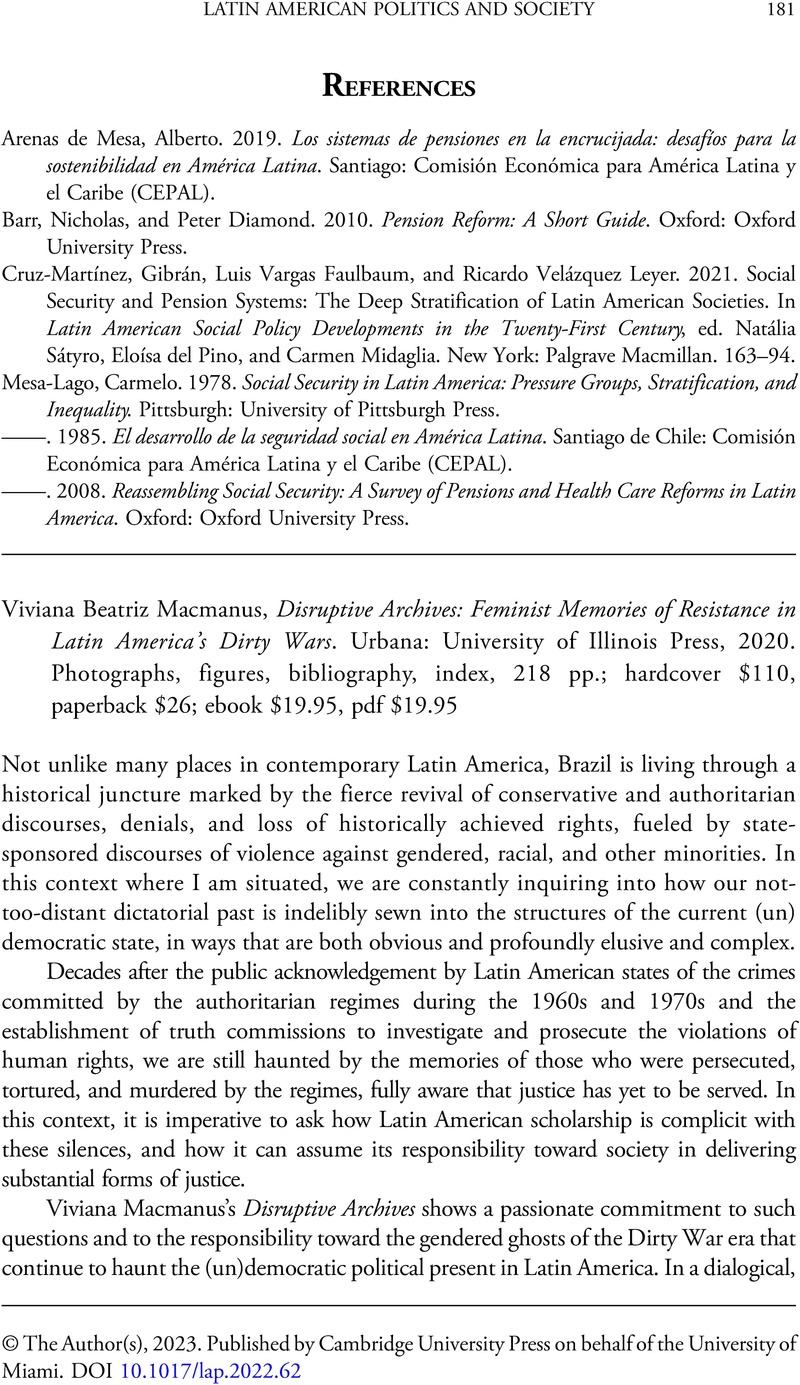No CrossRef data available.
Article contents
Viviana Beatriz Macmanus , Disruptive Archives: Feminist Memories of Resistance in Latin America’s Dirty Wars. Urbana: University of Illinois Press, 2020. Photographs, figures, bibliography, index, 218 pp.; hardcover $110, paperback $26; ebook $19.95, pdf $19.95
Review products
Viviana Beatriz Macmanus , Disruptive Archives: Feminist Memories of Resistance in Latin America’s Dirty Wars. Urbana: University of Illinois Press, 2020. Photographs, figures, bibliography, index, 218 pp.; hardcover $110, paperback $26; ebook $19.95, pdf $19.95
Published online by Cambridge University Press: 12 January 2023
Abstract
An abstract is not available for this content so a preview has been provided. Please use the Get access link above for information on how to access this content.

- Type
- Book Review
- Information
- Copyright
- © The Author(s), 2023. Published by Cambridge University Press on behalf of the University of Miami


